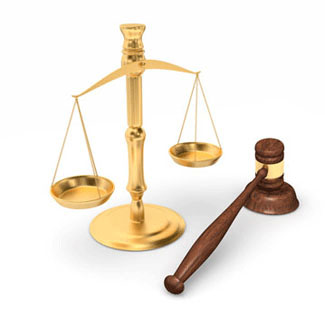
Johnson & Johnson Faces Lawsuit For Fraudulent Bankruptcy Strategy
Alleged victims sue Johnson & Johnson for concealing delaying or denying them their day in court
Monday, May 27, 2024 - An interesting talc cancer lawsuit against Johnson & Johnson's talcum powder product practices has surfaced, echoing the complaints of many others in a court battle. Five people filed the complaint in federal court in New Jersey, claiming that the large healthcare company planned a sophisticated plot involving several corporate transactions to deprive victims of their legal rights and fair compensation. As a component of a proposed class action, these claimants want to represent a sizable number of people who have legal cases against Johnson & Johnson pending as of August 11, 2023. In their cases, it is claimed that the talcum powder products laced with asbestos are to blame for serious health problems such as baby powder ovarian cancer and mesothelioma, a rare illness associated with asbestos exposure. This controversy has its origins in several years-long legal challenges that Johnson & Johnson faced. The corporation has been accused by the plaintiffs for a long time of marketing talcum baby powder that is tainted with asbestos, a known carcinogen. Johnson & Johnson has always refuted the claims that asbestos is included in its products and that there are any health dangers linked with it. Tens of thousands of claimants claim these items have harmed them. This has brought Johnson & Johnson's handling of these claims, notably their strategy for resolving them through the courts, under intense scrutiny.
The main contention of the current complaint is that Johnson & Johnson employed bankruptcy filings as a calculated tactic to reduce their legal obligation and handle the consequences of these lawsuits. The plaintiffs allege that Johnson & Johnson filed for bankruptcy more than once in different states to isolate and reduce the financial impact of the action on their entire company. They contend that by using this strategy, the parent business is effectively protected from direct claims while perhaps depriving thousands of victims of just compensation or a satisfactory resolution to their cases. One of the most recent of these moves is a subsidiary's third bankruptcy petition, which the business says will allow it to resolve claims for a suggested $6.475 billion. Opponents of Johnson & Johnson's approach contend that victims' legal rights are compromised by the company's frequent use of bankruptcy filings. The firm is perceived as trying to negotiate lesser settlements, under more controlled conditions, without a thorough review of the facts and testimony in a public trial by transferring these matters from a typical court setting to bankruptcy court. This has sparked questions about justice and transparency for the victims, who might be forced to live with the consequences of a system that some believe is biased in the corporation's favor.
This legal dispute sheds light on a larger discussion of corporate responsibility and how customers can hold big businesses accountable in addition to being an issue of business strategy. The Johnson & Johnson case is a key illustration of how strong parties can affect the outcome of litigation and possibly avoid complete accountability by employing intricate legal strategies. The public and regulatory agencies, in addition to individuals immediately impacted, will be keenly monitoring the litigation as it moves forward because of its potential to establish precedents for how businesses handle significant product liability issues and customers' rights to seek compensation.
 OnderLaw, LLC -
OnderLaw, LLC -